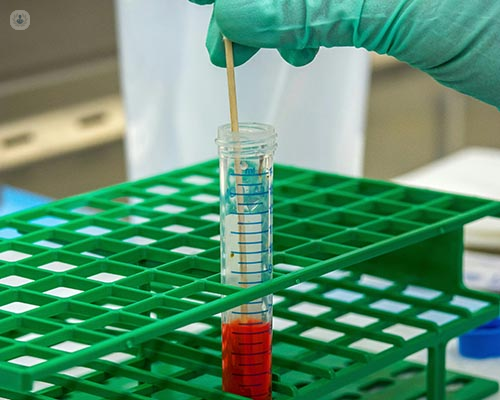Aldosterone and renin
What is being analysed?
Aldosterone and renin are two key hormones involved in regulating blood pressure and electrolyte balance in the body. This analysis measures the levels of aldosterone and renin in the blood, providing valuable insights into the functioning of the renin-angiotensin-aldosterone system (RAAS).

What does the result mean?
The results of this analysis help healthcare professionals assess the health of the RAAS. Elevated levels of aldosterone may indicate conditions such as primary hyperaldosteronism, while low levels could suggest Addison's disease. Abnormal renin levels may signal conditions like renal artery stenosis or renal failure.
Why do the analysis?
The analysis of aldosterone and renin is crucial for diagnosing and managing various medical conditions related to blood pressure regulation, fluid balance, and electrolyte homeostasis. It aids in identifying the root cause of hypertension and guides appropriate treatment strategies.
When to do the analysis?
This analysis is typically recommended when there is suspicion of disorders affecting the RAAS, including hypertension that is difficult to control, electrolyte imbalances, or symptoms suggestive of adrenal or renal dysfunction. It is also performed as part of the investigation for primary aldosteronism, also known as Conn’s syndrome.
What sample is required?
A blood sample is required for aldosterone and renin analysis. The blood is usually drawn from a vein in the arm using a standard venipuncture procedure.
Is any type of prior preparation necessary?
Fasting is often required for accurate results, so patients may be advised to refrain from eating or drinking anything other than water for a certain period before the test. Additionally, some medications that can interfere with aldosterone and renin levels may need to be temporarily discontinued, but this should be discussed with the specialist.
How is it used?
The analysis of aldosterone and renin levels helps in the diagnosis and management of conditions such as primary aldosteronism, adrenal insufficiency, and renal disorders. It guides healthcare professionals in tailoring treatment plans to address the specific hormonal imbalances identified.
What are the normal values?
Normal values for aldosterone and renin may vary based on factors such as age, sex, and individual health. However, typical reference ranges for aldosterone are 3-35 ng/dL, and for renin, they are 0.6-4.3 ng/mL/hr. It is essential to interpret results in the context of the individual's clinical history and other relevant factors.
What does it mean to have altered values?
Altered values may indicate various conditions. Elevated aldosterone with suppressed renin may suggest primary hyperaldosteronism, while low aldosterone with elevated renin may indicate Addison's disease. Understanding the context and the patient's overall health is crucial for an accurate diagnosis.
Values in Table Format
|
Hormone |
Normal Range |
|
Aldosterone |
3-35 ng/dL |
|
Renin |
0.6-4.3 ng/mL/hr |
In conclusion, the analysis of aldosterone and renin levels is a valuable tool in diagnosing and managing conditions related to the RAAS. Interpreting the results within the context of the patient's health is essential for accurate diagnosis and effective treatment planning.